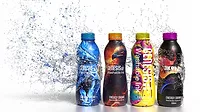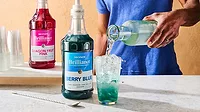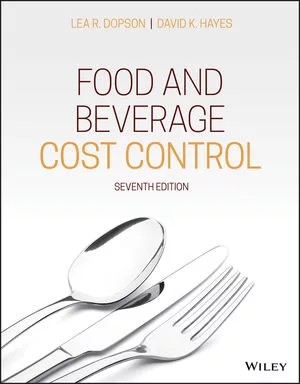Beverage brands turn to innovative inks to create interactive experiences
Biodegradable inks, coatings help beverage-makers reduce environmental impact

Image courtesy of Chlorophyll Water
Fashion designer Stella McCartney, who has designed an active wear collection for Adidas since 2005, is quoted for saying: “Sustainability goes across everything I do with Adidas and everything I do with my own house, so the Olympic kit is no exception. It is incredibly environmental in the way that it is manufactured. For example, there’s no leather — it’s free from PVC.”
Similarly, the use of sustainable packaging materials has become a running theme within the beverage industry — impacting the use of inks and coatings, experts note.
“The increasing need for sustainable materials and practices has greatly influenced inks and coatings, particularly those used in packaging,” says Maria Del Rio, chief marketing officer at Chromatic Technologies Inc. (CTI), Colorado Springs, CO. “Consumers are more eco-conscious, so there's a strong shift toward using eco-friendly packaging materials, including inks free from harmful chemicals and contaminants that disrupt the recycling stream.”
Ryan Ostrowski, research and development lab manager of metal deco for INX International Ink Co., Schaumburg, IL, echoes similar sentiments.
“Consumer demand for sustainable consumables are at the top of the list,” he says. “Based on these demands, INX offers two ink lines: EcoCan and INXhrc. EcoCan is a two-piece metal ink system and was the industry’s first eco-friendly metal decorating ink to receive a Gold Level Material Health Certificate from the Cradle to Cradle Products Innovation Institute.
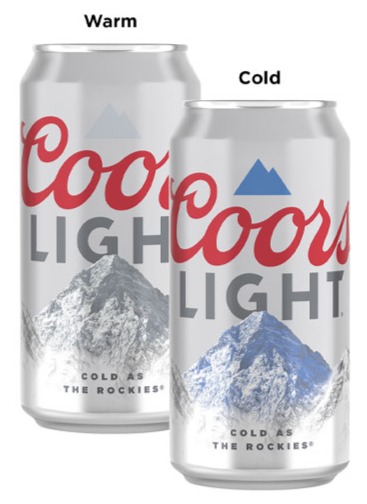
“INXhrc is a high performance, natural-based ink for flexographic, offset and gravure applications, which replaces petrochemical derived ingredients with clean, renewable and sustainable ingredients,” he continues.
CTI’s Del Rio adds that there’s also growing demand for special inks — such as thermochromic and photochromic — which offer unique functionalities that can align with sustainability objectives while enhancing product differentiation and brand recognition.
“Additionally, there is a growing use of smart packaging technologies like NFC tags and QR codes, which integrate special inks to provide users with more information about product sustainability, how to use it, and how to dispose of it properly,” she says.
Meeting consumer trends
Aside from sustainability, experts note that interactive packaging that makes products more engaging also is reshaping the inks and coatings market.
“Integrating innovative inks and coatings into beverage packaging enables brands to create impactful, memorable experiences that resonate with consumers and strengthen brand identity,” CTI’s Del Rio explains. “Beverage brands benefit from leveraging the latest innovations in inks and coatings, such as thermochromic, photochromic, and glow-in-the-dark technologies.
“These advancements enhance consumer engagement through interactive packaging experiences, such as indicating when a beverage is chilled and ready to drink with thermochromic inks. Utilizing unique ink innovations like photochromic inks that change color in sunlight can help products attract consumer attention and differentiate brands,” she continues. “Glow-in-the-dark ink technology offers brands a distinctive way to enhance product visibility and create memorable experiences at night.”
INX’s Ostrowski points to eye-catching visual appeal of products that attract the attention of consumers through design.
INX offers innovative products like Tactile Plus, which gives the surface of the can a unique textured effect,” he says. “We also offer our customers a selection of ink products with thermochromic and photochromic properties.”
CTI’s Del Rio notes the growing need for packaging that ensures product safety with anti-counterfeiting measures and easy-open designs for added convenience.
“These trends drive innovation in the industry to meet consumer demands for unique, safe and user-friendly packaging solutions,” she explains.
Moreover, by incorporating the latest technologies in inks and coatings, “beverage-makers can effectively tell brand stories, communicate freshness and quality attributes, and build brand equity,” Del Rio says.
Eyes on the future
As the inks and coatings market continues to evolve, experts highlight some emerging innovations that beverage-makers could benefit from using.
“EcoCan and bio-renewable metal decorating coatings enhance customer satisfaction,” INX’s Ostrowski says. “We develop ink and ink vehicles through the use of bio-renewable raw materials, and one new trend we see is companies requiring validation of bio-renewable content.
“To accomplish this, we calculate the percentage of bio-renewable content and validate the percentage of bio-renewable carbon content in our inks,” he continues. “INX uses the ASTM D6866 standard testing method, which measures bio-based carbon content for this validation.”
When it comes to the most common requests from beverage manufacturers, Ostrowski notes there are several, but most requests are for lower cost products. “It is a challenging request because raw material and transportation costs continue to increase and we have no control over it,” he explains.
CTI’s Del Rio notes that the company’s most common requests involve enhancing marketing concepts by providing interactivity on the package by applying ink technology to graphics.
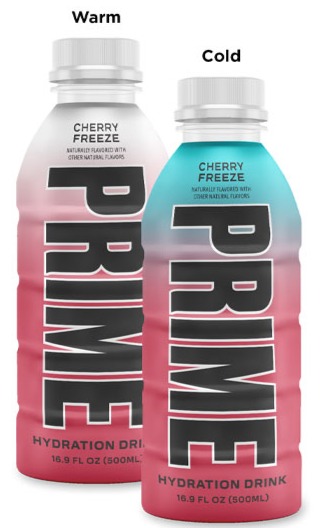
“This interactivity engages consumers directly and can be leveraged effectively on social media, a key channel for finding and engaging with target audiences,” she explains. “Beverage manufacturers often seek innovative ink and coating solutions to create memorable and interactive experiences, driving offline and online consumer engagement.”
As far as what’s on the horizon for inks and coatings, Del Rio says the beverage market is poised for exciting developments that will reshape packaging strategies.
“We anticipate a shift toward more sustainable ink formulations driven by consumer demand for eco-friendly products,” she says. “This trend will lead to innovations in biodegradable inks and coatings that reduce environmental impact.”
INX’s Ostrowski echoes similar sentiments in regards to sustainable inks and coating’s impact.
“I think it is the EPA, FDA, and REACH reviews on raw materials and restrictions regarding SVHC (substances very high concern),” he says. ”However, innovative approaches to incorporate more bio-renewable content in the production of new inks and coatings for the beverage market might counteract this, albeit at a higher cost.”
CTI’s Del Rio also anticipates that advancements in smart ink technologies will enable enhanced interactivity and data integration, empowering beverage brands to deliver more personalized experiences and gather valuable consumer insights.
“As these technologies evolve, they will play a pivotal role in differentiating brands, driving consumer engagement, and fostering a more sustainable beverage market,” she concludes.
Looking for a reprint of this article?
From high-res PDFs to custom plaques, order your copy today!




